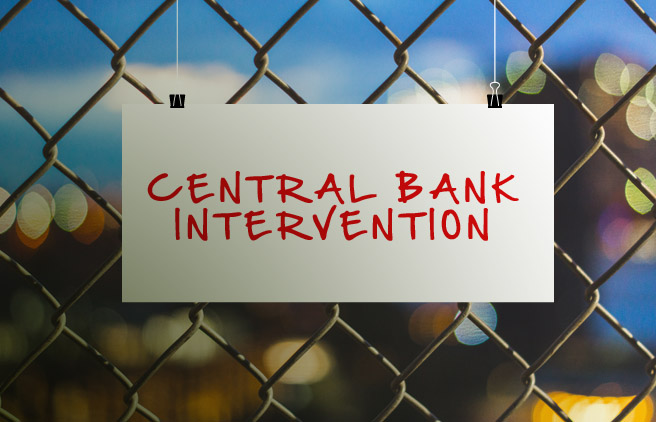
Central Bank Intervention
Since the financial crisis in 2008-09, the investment landscape has been dominated by one theme: central bank intervention or, more precisely, zero interest rates and increased money supply. Broadly speaking, sovereign debt, credit and stocks globally have rallied significantly from 2009 levels. However, the wealth gap has widened in most countries as asset builders represented by the younger generation have only seen modest income growth versus the prices of the assets they are acquiring. They are also earning very little interest income from their savings.
This raises two questions:
- Why is personal income growth falling behind asset prices?
- If asset prices are rising regardless of fundamentals, are asset bubbles occurring?
Lagging personal income growth
The challenge is that not everyone has been able to access zero interest rates and benefit from growing money supply. Since the financial crisis, banks have been very selective with lending. They have favoured companies with steady cash flows, which are generally safer but have lower growth. Instead of investing the borrowed capital in their businesses, these companies have typically chosen to buy back shares, effectively creating additional demand for stocks. Share buybacks have grown so significantly that they now account for more than share purchases by pensions and individuals.
Another reason for the lag in personal income growth is productivity. Labour productivity has been weak, leaving no incentive for companies to increase wages, even at full employment. Automation and the growing popularity of e-commerce have also reduced companies’ reliance on labour.
Asset bubbles, anyone?
When will the next major stock market correction occur? To answer this question, we must first understand what has driven the growth in share prices. As explained above, the majority of growth has been driven by share buybacks, which have created additional demand for stocks. Unlike typical investors who buy shares based on value, companies typically buy back shares systematically. Central banks have been a major source of capital for share buybacks and there has been no shortage of funding. Globally, central banks have injected over US$10 trillion into economies since the financial crisis.
Rapid money creation generally results in currency depreciation. We have seen this occur in countries such as Argentina, Mexico and Venezuela. However, while many countries globally have increased their money supply since the financial crisis, their currencies have not depreciated versus other currencies. This creates the illusion that printing money has no consequences. We believe that currencies are depreciating versus assets instead of versus other currencies. This means that a fixed amount of money is consistently buying fewer assets as central banks continue to inject funds. We are referring to scarce assets in this context, not consumption assets that can be easily produced. Because there is a growing amount of money consistently chasing a finite amount of assets, asset prices have increased with the increase in money supply.
For share prices to correct significantly, the money supply must shrink. This decision will be made by central banks. It is no coincidence that in 2018, when central banks were either decreasing or aiming to decrease the money supply, share prices fell during the fourth quarter. We believe it was the result of currencies appreciating versus assets. Asset builders enjoyed this period as their buying power improved. Unfortunately, it was short lived, as declining prices were seen as a threat by central banks and the path to normalization (normal interest rates and monetary supply) was halted.
The U.S. Federal Reserve turned dovish after a 14% correction in the U.S. stock market during the fourth quarter of 2018. Others, including the European Central Bank and Bank of Japan, have recently joined the camp. The Fed is expected to cut rates by 25 basis points as early as this month. We are certain that the money supply is set to grow again as cutting interest rates is not an option for every central bank. If recent history is any guide, money will depreciate, and asset prices will rise even though economic fundamentals may not improve.
To answer the question in a few words, we may not be in an asset bubble as long as central banks keep adding to the money supply, effectively boosting prices. This could be derailed by policy mistakes and other factors. We will continue to monitor and adjust the portfolios as needed.
 By Alfred Lam, CFA, Senior Vice-President and Chief Investment Officer and Marchello Holditch, CFA, Vice-President and Portfolio Manager CI Multi-Asset Management
By Alfred Lam, CFA, Senior Vice-President and Chief Investment Officer and Marchello Holditch, CFA, Vice-President and Portfolio Manager CI Multi-Asset Management
This document is intended solely for information purposes. It is not a sales prospectus, nor should it be construed as an offer or an invitation to take part in an offer. This report may contain forward-looking statements about one or more funds, future performance, strategies or prospects, and possible future fund action. These statements reflect the portfolio managers’ current beliefs and are based on information currently available to them. Forward-looking statements are not guarantees of future performance. We caution you not to place undue reliance on these statements as a number of factors could cause actual events or results to differ materially from those expressed in any forward-looking statement, including economic, political and market changes and other developments. United pools are managed by CI Investments Inc. Assante Wealth Management is a subsidiary of CI Investments Inc. Neither CI Investments Inc. nor its affiliates or their respective officers, directors, employees or advisors are responsible in any way for damages or losses of any kind whatsoever in respect of the use of this report. Commissions, trailing commissions, management fees and expenses may all be associated with investments in mutual funds and the use of the Asset Management Service. Any performance data shown assumes reinvestment of all distributions or dividends and does not take into account sales, redemption or optional charges or income taxes payable by any security holder that would have reduced returns. Mutual funds are not guaranteed, their values change frequently and past performance may not be repeated. Please read the fund prospectus and consult your advisor before investing. Assante Wealth Management and the Assante Wealth Management design are trademarks of CI Investments Inc. CI Multi-Asset Management is a division of CI Investments Inc. This report may not be reproduced, in whole or in part, in any manner whatsoever, without prior written permission of Assante Wealth Management. Copyright © 2019 Assante Wealth Management (Canada) Ltd. All rights reserved.
Since the financial crisis in 2008-09, the investment landscape has been dominated by one theme: central bank intervention or, more precisely, zero interest rates and increased money supply. Broadly speaking, sovereign debt, credit and stocks globally have rallied significantly from 2009 levels. However, the wealth gap has widened in most countries as asset builders represented by the younger generation have only seen modest income growth versus the prices of the assets they are acquiring. They are also earning very little interest income from their savings.
This raises two questions:
- Why is personal income growth falling behind asset prices?
- If asset prices are rising regardless of fundamentals, are asset bubbles occurring?
Lagging personal income growth
The challenge is that not everyone has been able to access zero interest rates and benefit from growing money supply. Since the financial crisis, banks have been very selective with lending. They have favoured companies with steady cash flows, which are generally safer but have lower growth. Instead of investing the borrowed capital in their businesses, these companies have typically chosen to buy back shares, effectively creating additional demand for stocks. Share buybacks have grown so significantly that they now account for more than share purchases by pensions and individuals.
Another reason for the lag in personal income growth is productivity. Labour productivity has been weak, leaving no incentive for companies to increase wages, even at full employment. Automation and the growing popularity of e-commerce have also reduced companies’ reliance on labour.
Asset bubbles, anyone?
When will the next major stock market correction occur? To answer this question, we must first understand what has driven the growth in share prices. As explained above, the majority of growth has been driven by share buybacks, which have created additional demand for stocks. Unlike typical investors who buy shares based on value, companies typically buy back shares systematically. Central banks have been a major source of capital for share buybacks and there has been no shortage of funding. Globally, central banks have injected over US$10 trillion into economies since the financial crisis.
Rapid money creation generally results in currency depreciation. We have seen this occur in countries such as Argentina, Mexico and Venezuela. However, while many countries globally have increased their money supply since the financial crisis, their currencies have not depreciated versus other currencies. This creates the illusion that printing money has no consequences. We believe that currencies are depreciating versus assets instead of versus other currencies. This means that a fixed amount of money is consistently buying fewer assets as central banks continue to inject funds. We are referring to scarce assets in this context, not consumption assets that can be easily produced. Because there is a growing amount of money consistently chasing a finite amount of assets, asset prices have increased with the increase in money supply.
For share prices to correct significantly, the money supply must shrink. This decision will be made by central banks. It is no coincidence that in 2018, when central banks were either decreasing or aiming to decrease the money supply, share prices fell during the fourth quarter. We believe it was the result of currencies appreciating versus assets. Asset builders enjoyed this period as their buying power improved. Unfortunately, it was short lived, as declining prices were seen as a threat by central banks and the path to normalization (normal interest rates and monetary supply) was halted.
The U.S. Federal Reserve turned dovish after a 14% correction in the U.S. stock market during the fourth quarter of 2018. Others, including the European Central Bank and Bank of Japan, have recently joined the camp. The Fed is expected to cut rates by 25 basis points as early as this month. We are certain that the money supply is set to grow again as cutting interest rates is not an option for every central bank. If recent history is any guide, money will depreciate, and asset prices will rise even though economic fundamentals may not improve.
To answer the question in a few words, we may not be in an asset bubble as long as central banks keep adding to the money supply, effectively boosting prices. This could be derailed by policy mistakes and other factors. We will continue to monitor and adjust the portfolios as needed.
 By Alfred Lam, CFA, Senior Vice-President and Chief Investment Officer and Marchello Holditch, CFA, Vice-President and Portfolio Manager CI Multi-Asset Management
By Alfred Lam, CFA, Senior Vice-President and Chief Investment Officer and Marchello Holditch, CFA, Vice-President and Portfolio Manager CI Multi-Asset Management
This document is intended solely for information purposes. It is not a sales prospectus, nor should it be construed as an offer or an invitation to take part in an offer. This report may contain forward-looking statements about one or more funds, future performance, strategies or prospects, and possible future fund action. These statements reflect the portfolio managers’ current beliefs and are based on information currently available to them. Forward-looking statements are not guarantees of future performance. We caution you not to place undue reliance on these statements as a number of factors could cause actual events or results to differ materially from those expressed in any forward-looking statement, including economic, political and market changes and other developments. United pools are managed by CI Investments Inc. Assante Wealth Management is a subsidiary of CI Investments Inc. Neither CI Investments Inc. nor its affiliates or their respective officers, directors, employees or advisors are responsible in any way for damages or losses of any kind whatsoever in respect of the use of this report. Commissions, trailing commissions, management fees and expenses may all be associated with investments in mutual funds and the use of the Asset Management Service. Any performance data shown assumes reinvestment of all distributions or dividends and does not take into account sales, redemption or optional charges or income taxes payable by any security holder that would have reduced returns. Mutual funds are not guaranteed, their values change frequently and past performance may not be repeated. Please read the fund prospectus and consult your advisor before investing. Assante Wealth Management and the Assante Wealth Management design are trademarks of CI Investments Inc. CI Multi-Asset Management is a division of CI Investments Inc. This report may not be reproduced, in whole or in part, in any manner whatsoever, without prior written permission of Assante Wealth Management. Copyright © 2019 Assante Wealth Management (Canada) Ltd. All rights reserved.





